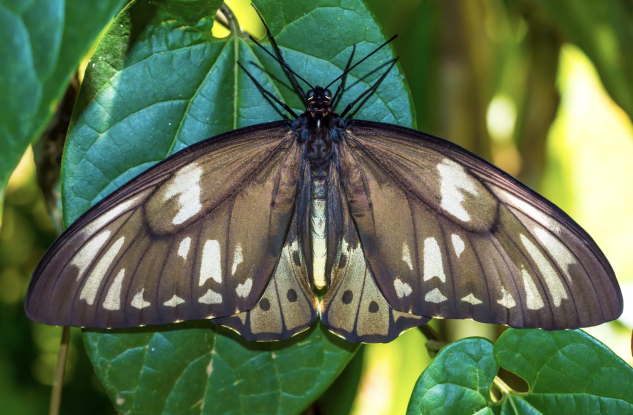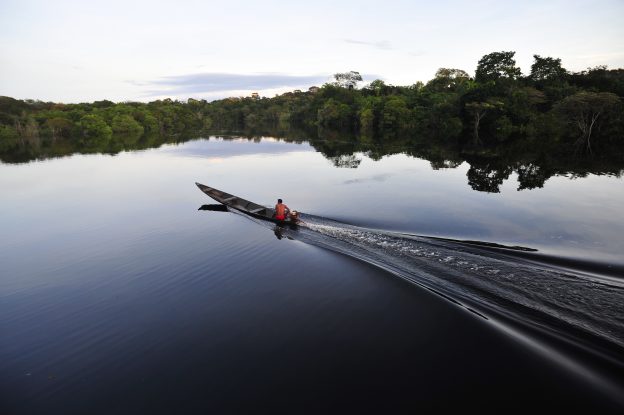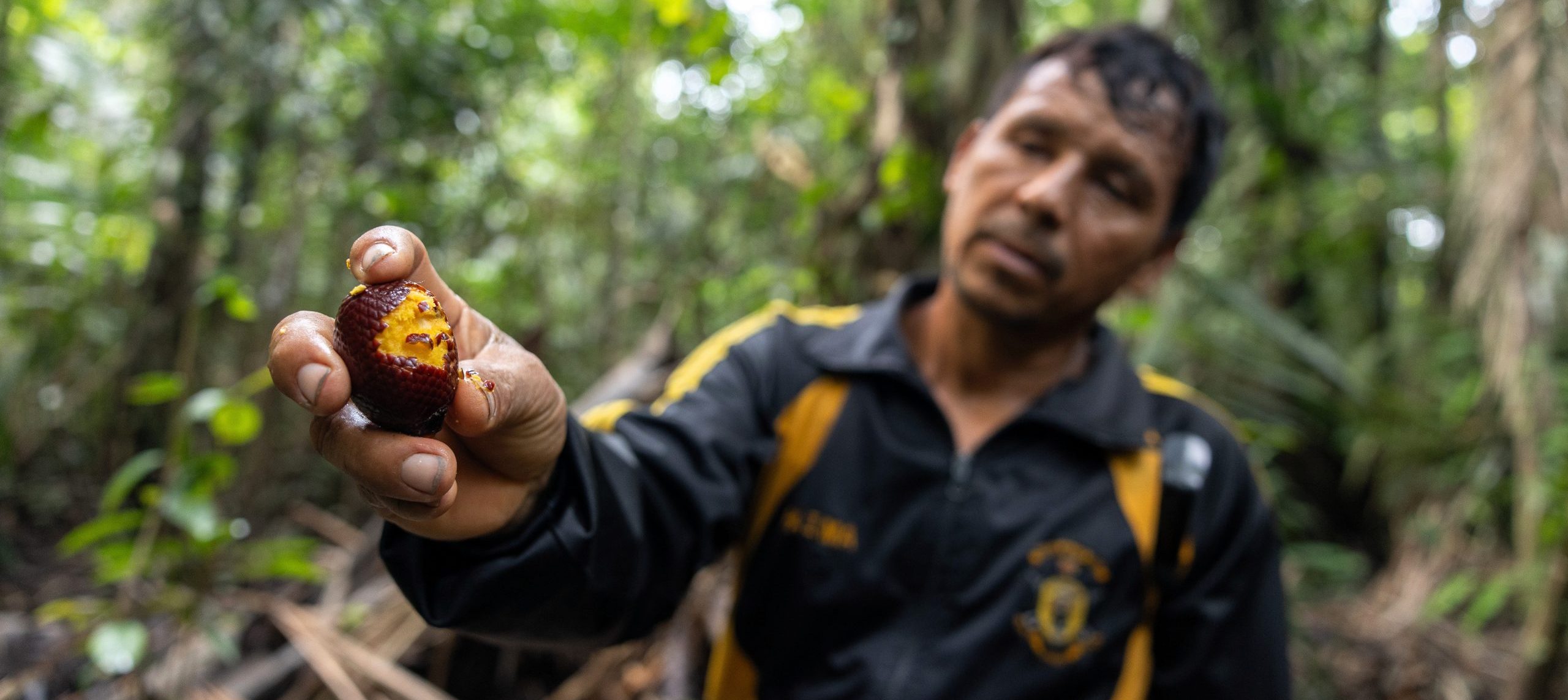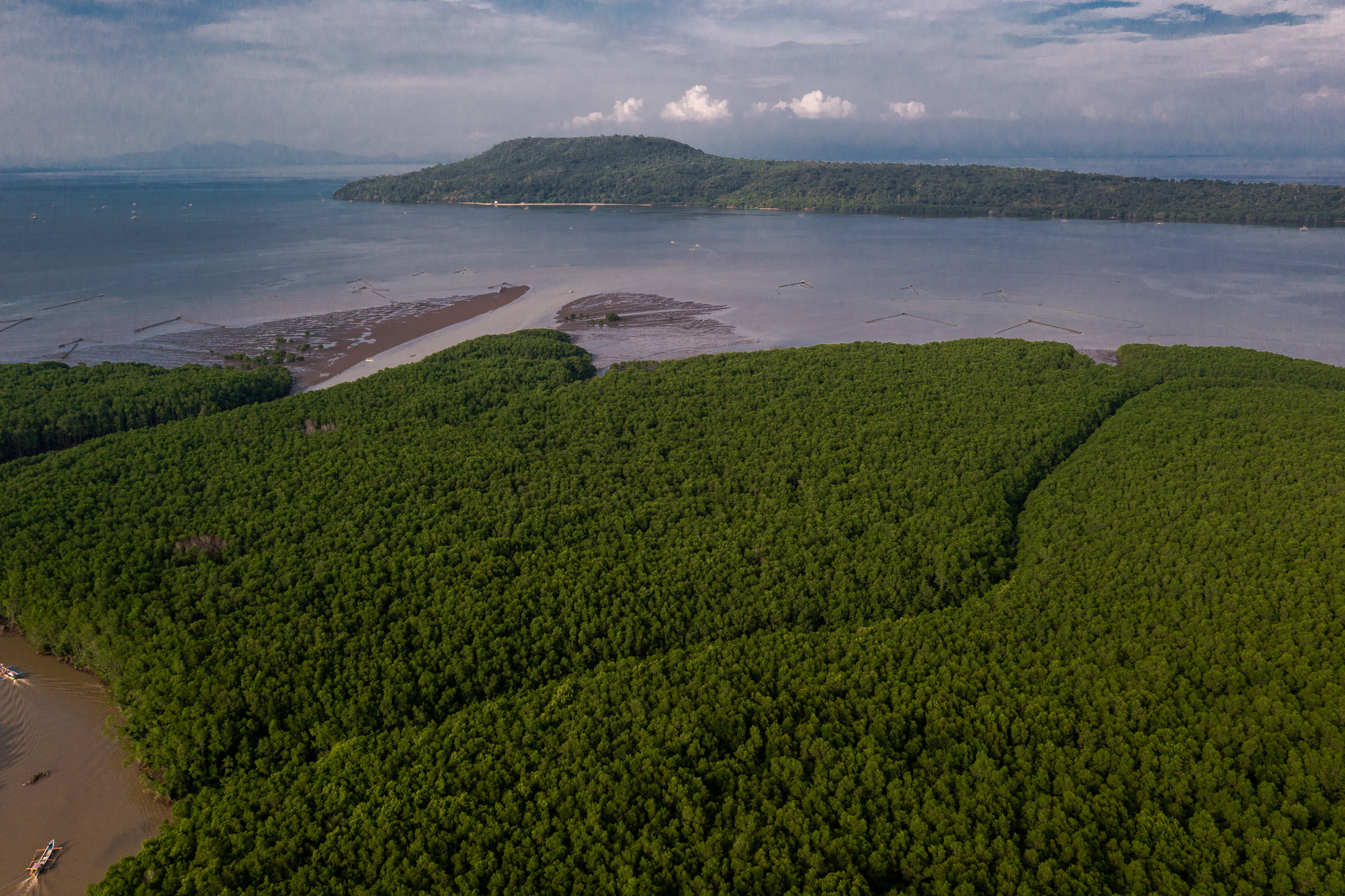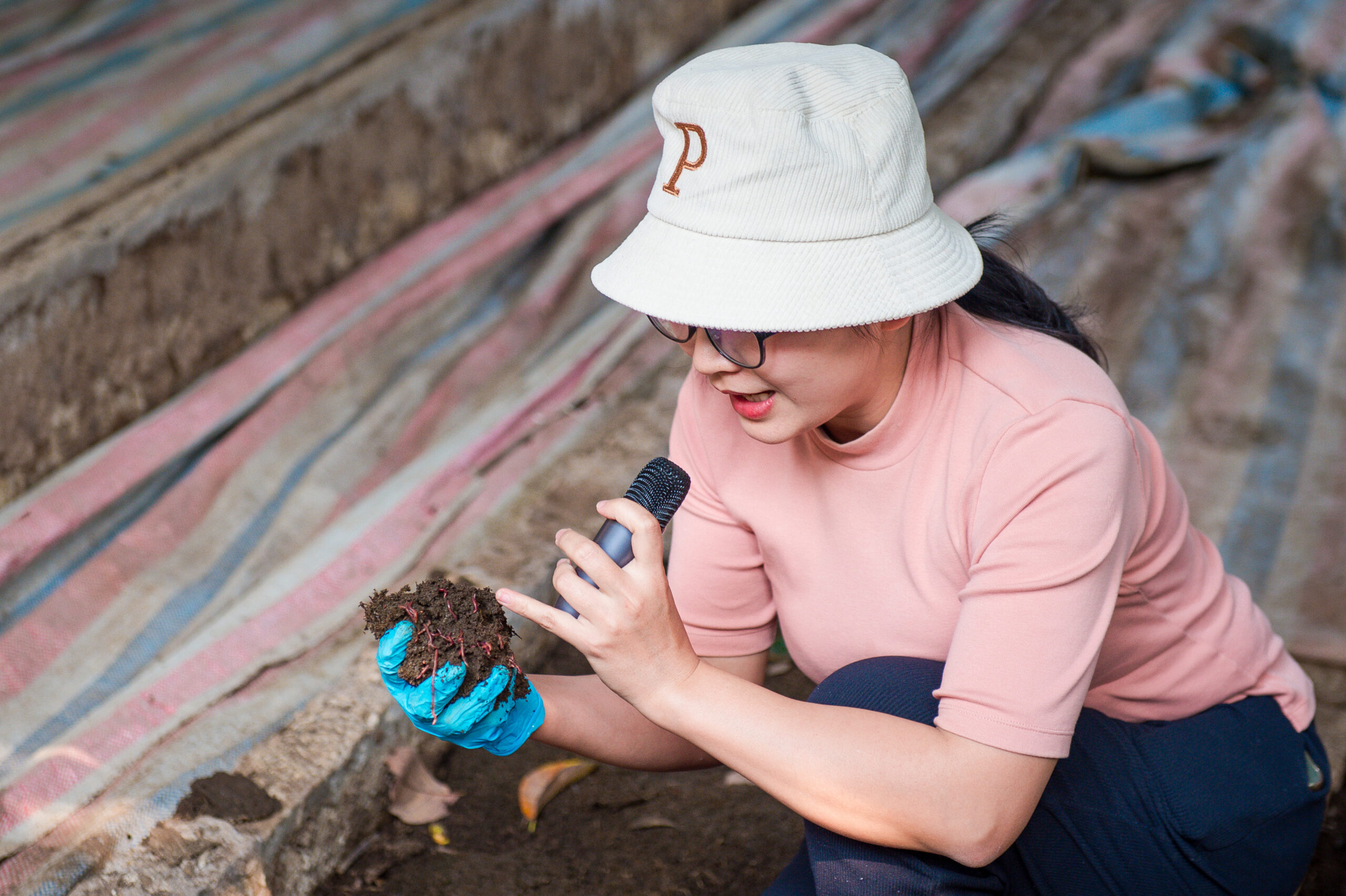This article is translated and adapted from the original Spanish version, published on Los Bosques.
At dawn in September, the flooded forests of San Francisco, a small community in Peru’s Amazon, stir awake. Breaking the silence, families pull on rubber boots and set out together, walking carefully through knee-deep water to reach the aguajales—the Maurita flexuosa forests where aguaje fruit ripens high above.
The clusters of Mauritia flexuosa palms tower overhead, their scarlet fruits standing out against the green canopy. Known as aguaje, the fruit represents a source of vitamins, a cultural symbol and a crucial source of income. Across the region, an estimated 50 tons are consumed every day.
But harvesters must venture deeper each season. With fewer palms left standing near their homes, families now travel further into Pacaya Samiria National Reserve—where not only people, but also jaguars, macaws and tapirs, depend on these swamps for survival.
When the palms fall
Harvesting aguaje is not simple. The palms rise 25 to 35 metres above the swamp floor. For decades, the common and fastest practice was also the most destructive: to cut the palms down to access the fruit. “My husband cuts the palm and I separate the fruit,” says Kandy, community secretary of San Francisco. Each sack sells for about USD 6, providing a vital income boost for families who otherwise rely on fishing, farming and hunting.
But cutting down palms has a hidden cost. Only the female palms produce fruit, while males provide pollen. When a female is felled, the loss is permanent: fewer fruits for future generations and harvests, less food for wildlife and less carbon stored in the peat soils beneath the swamp. “Every year the aguaje gets farther away,” says Roberto Núñez, a harvester from nearby Chanchamayo. “Sometimes we don’t find it at all.”
“ We always thought cutting down the palm was the fastest way. But now we know that if a female palm falls, that place will never give fruit again,” adds Kandy, reflecting on the shift in perspective. 25-06 Marlondag_CIFOR-Darwin_Chancham12
A depleting resource
The flooded ecosystem where the aguaje palms thrive is more complex than it first appears. Beyond supplying fruit, these palm swamps help regulate the region’s water cycle, provide habitat for unique flora and fauna and act as a natural buffer for climate change adaptation and mitigation.
“The aguajal is the most representative ecosystem of Amazonian peatlands in Peru and these are very important for the country’s carbon reserves,” explains Kristell Hergoualc’h, a senior scientist at the Center for International Forestry Research and World Agroforestry (CIFOR-ICRAF). Over centuries, the slow decomposition of fallen palm leaves and roots in the waterlogged soil has built up thick layers of peat—dark, spongy earth that holds enormous amounts of carbon.
But this balance is fragile. “This type of harvest, which consists of selectively felling female palms, causes greenhouse gas emissions and alters the ecosystem,” says Hergoualc’h. “With fewer palms, there is also less food for animals. And with fewer roots and less litter feeding the soil, peat formation slows, reducing the swamp’s capacity to store carbon.”
Working with local partners, Hergoualc’h is leading a project to co-design sustainable aguaje management practices with local communities and policymakers—so harvests can continue while the forests maintain their role in protecting the climate. 25-06 Marlondag_CIFOR-Darwin_Chancham7
A collaborative approach
“There’s a growing demand for aguaje fruit and that also creates vulnerability for the resource if it isn’t managed properly,” notes Gabriel Hidalgo, biologist at the Research Institute of the Peruvian Amazon (IIAP), an institution linked to Peru’s Ministry of Environment.
During a recent workshop held in the communities of San Francisco and Chanchamayo, residents shared their efforts to change harvesting practices. In San Francisco, for instance, locals explained that with the support and guidance from Peru’s National Service of Natural Protected Areas (Sernanp), they are learning how to climb aguaje palms and only cut the fruit bunch without felling the palm. “It’s a huge advantage, because this way the palm will keep producing fruit for up to 40 years,” says Belvi Lopez, municipal agent of the community.
Still, climbing alone is only a beginning. Sustainable harvesting requires much more: comprehensive training programmes, management strategies and regulatory frameworks adapted to local realities. “Communities are key to implementing any project aimed at promoting sustainable management, because they are the ones who will ultimately carry and develop these strategies forward,” stresses Hergoualc’h. 25-06 Marlondag_CIFOR-Darwin_Chancham5
That is why the project is grounded in participation. “It is essential to understand the territorial and socioeconomic dynamics of each community and, on that basis, co-design solutions with them,” says Alonso Pérez, a researcher at the Institute of the Common Good (IBC). Through a participatory process that applies both gender and intergenerational perspectives, the project aims to strengthen local capacities, support the formation of management committees and facilitate the implementation of community-led management plans. These plans assign rights and responsibilities for sustainable harvesting, while also guiding community-led monitoring of the forests’ resources.
Generating accurate information
According to the Loreto Wetlands Map, aguajales cover more than 5 million hectares in the region. “But not all palm swamps are the same,” says Hidalgo. Communities know their ecosystems better than anyone, yet the tools they have for monitoring them are limited.
To fill this gap, IIAP is working with communities to establish monitoring plots that measure peat depth and track changes on the ground. At the same time, drones operated with support from Sernanp capture aerial images of the palm swamps. These images are then processed with IIAP’s specialised software to estimate palm density and map the extent of the forests.
This combination of ground-level plots and aerial views makes it possible to map the extent of aguajales and estimate the number of palms present. “It will generate accurate data to design management plans tailored to each territory,” says Hidalgo.
But the challenges for sustainable management of aguajales go beyond the forest itself. “Not all communities are familiar with forestry regulations and many requirements often become barriers to formalizing their management,” notes Pérez. 25-06 Marlondag_CIFOR-Darwin_Chancham15
Researchers are now working to identify both the challenges and opportunities that could strengthen and improve the livelihoods of families committed to conserving standing aguaje palms. “The task is to better understand the value chain and its actors, identify opportunities and ensure that everyone participates so the benefits are shared fairly,” says Pérez.
For local leaders, change is already beginning. “We know not everyone here can climb palms to reach aguaje. But with these upcoming workshops, people will learn new methods and get more motivated,” says Apu Alexandro, leader of the community. Municipal agent Belvi agrees: “Over time, our mindset will shift. We’ll keep aguaje resources closer and support our families now and in the future.”
For more information on this topic, you can contact Kristell Hergoualc’h at k.hergoualch@cifor-icraf.org
Acknowledgements
The project Sustainable management of palm swamps peatlands by local communities is led by CIFOR-ICRAF in collaboration with the Instituto del Bien Común (IBC), the Peruvian Society for Environmental Law (SPDA), and the Peruvian Amazon Research Institute (IIAP). This project is funded through the UK Government’s Darwin Initiative.
The research team gratefully acknowledges the support of the Pacaya Samiria National Reserve and the communities of San Francisco and Chanchamayo during field visits and workshops in June 2025.
In line with participants’ preferences, some surnames have been withheld.
